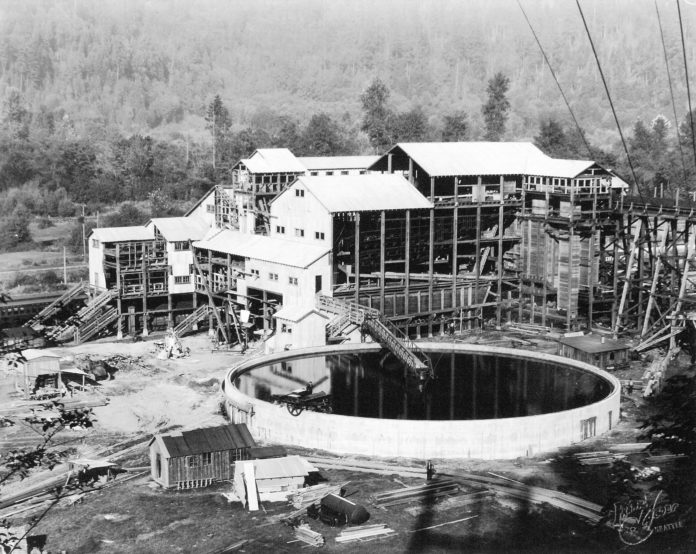According to the Pacific Coast Bulletin it was Ben Jones and Tom Jones who discovered the coal seam, which eventually led to the development of the New Black Diamond mine. The mine shown here under construction in 1926-27 was located one-half mile west of the Jones Road Bridge over the Cedar River. Other pioneers who operated coal mines in this Cedar Mountain area include: James Coleman, Fred and Edith Cavanaugh, the Jones brothers, E.R. Peoples with his nephew E.G. Littlefield, and John McQuade. The mine operated on the Jones seam, named for the aforementioned discoverers. In 1926, Tom McQuade built a nearby home with a convenience store up front, hoping to capitalize on sales to workers. That business, now known as Cedar Rapids 76 station, still operates from the same building which originally catered to coal miners.
Upon completion of these facilities George Watkin Evans, a coal mining engineer called the New Black Diamond “one of the most modern mines in western North America.” Many of the mine workers lived 12 miles south in the town of Black Diamond and served by the Pacific Coast Railroad. Special trains transported miners to and from their jobs each shift change. In this north-facing photo the Cedar River, SR 169, and the railroad (now the Cedar River Trail) were behind the mine facilities. The large tank in the center was used for clarifying water from coal washing. After producing 2.4 million tons of coal in 16 years the mine closed permanently on August 15, 1941, four months prior to the U.S. entry in World War II. The property was sold to King County in 1948 and used by their roads department for nearly 40 years. Sunset Materials purchased the site in 1996 and operated trucking and material processing facilities for the next 20 years. In 2016, the property was sold to Lakeside Industries for $9.5 million. Lakeside plans to relocate their existing Covington asphalt plant to this long-term industrial site.This photo from the workshops of photographer Frank Jacobs come courtesy of the Black Diamond Historical Museum.







